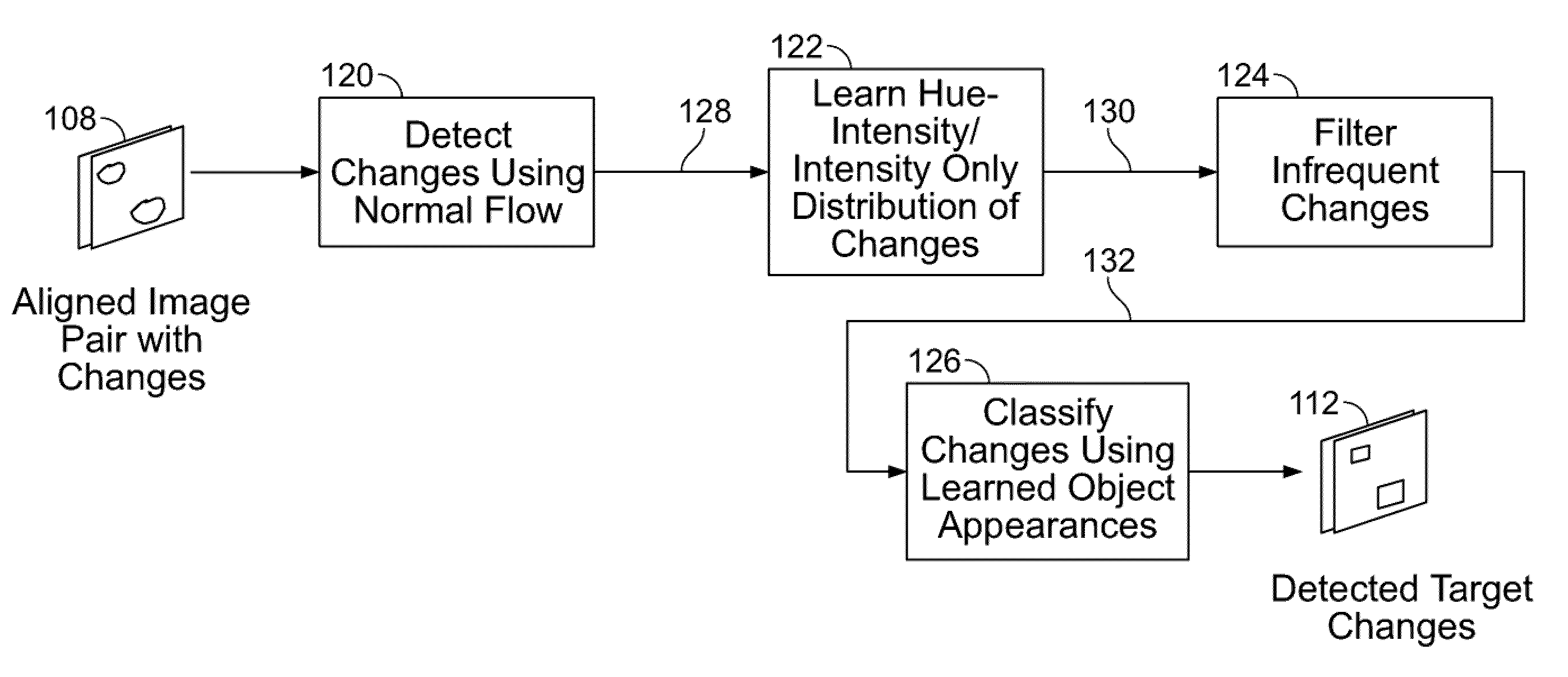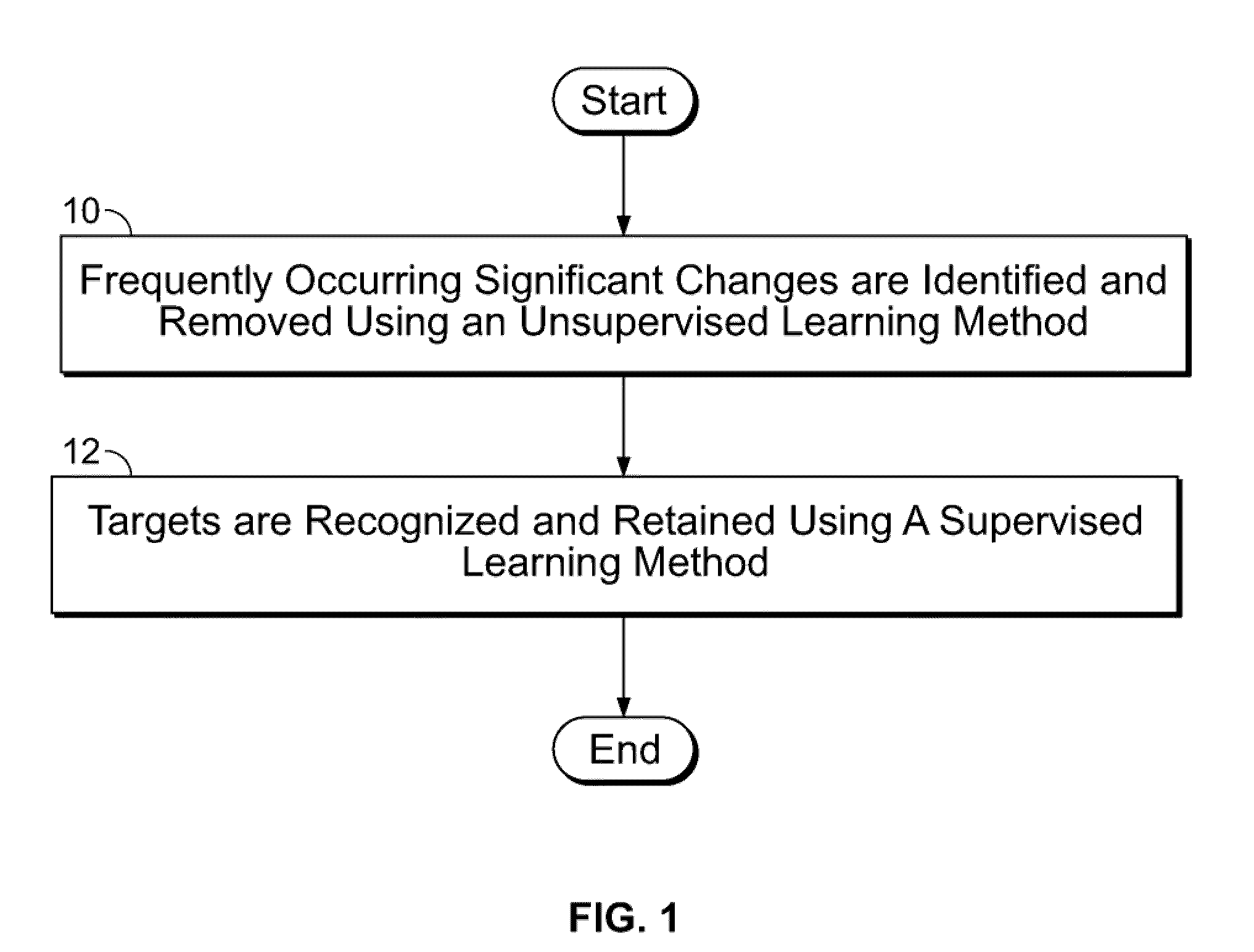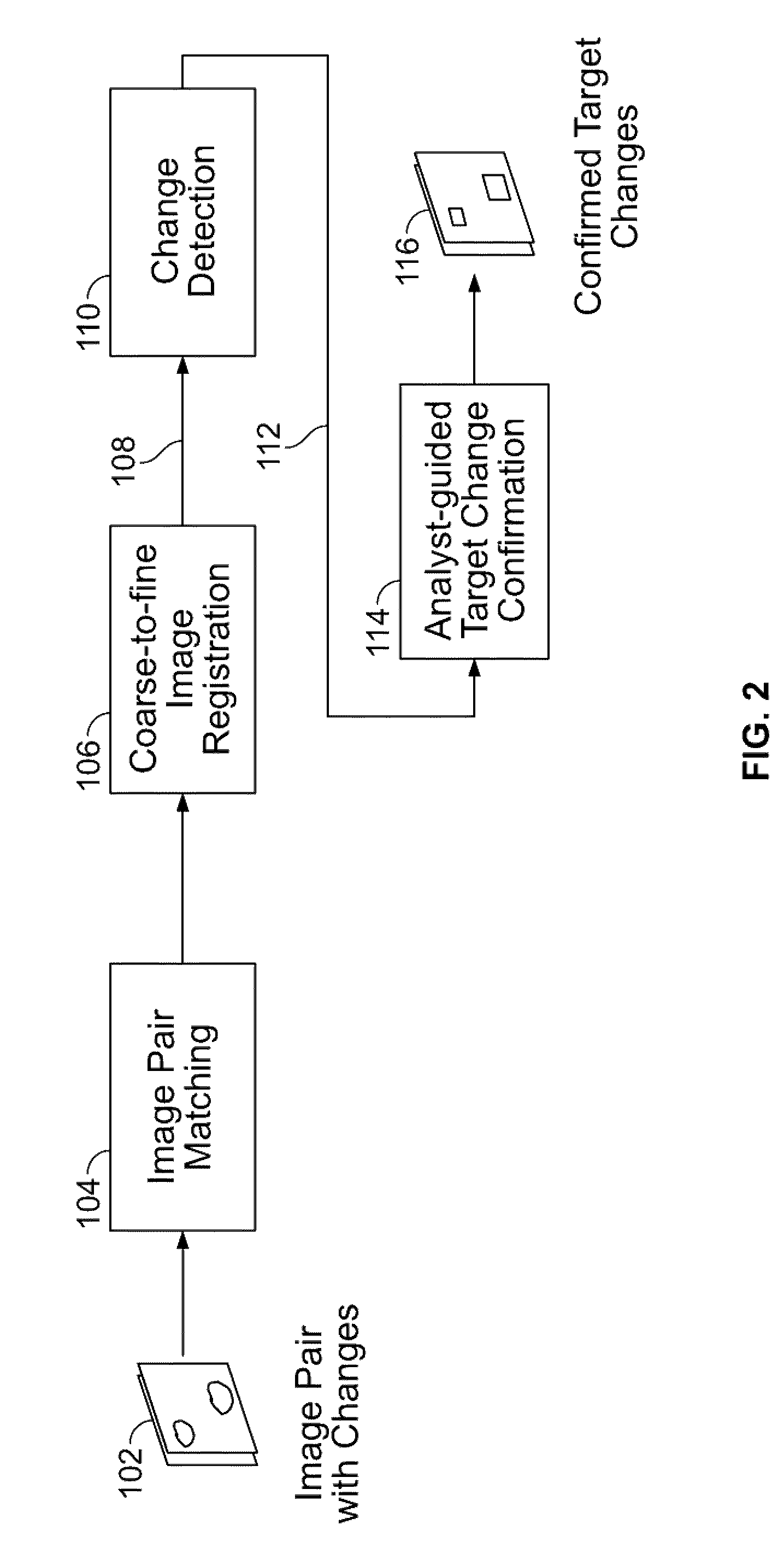Method and apparatus for detecting targets through temporal scene changes
a temporal scene and target detection technology, applied in the field of computer vision systems, can solve the problems of multispectral image analysis techniques for shadow detection, image noise in transformed color space is higher than that in original image data, and the background model cannot be buil
- Summary
- Abstract
- Description
- Claims
- Application Information
AI Technical Summary
Benefits of technology
Problems solved by technology
Method used
Image
Examples
Embodiment Construction
[0031]FIG. 1 is a high-level process flow diagram illustrating exemplary steps for detecting targets in imagery, according to an embodiment of the present invention. At step 10, frequently occurring significant changes, such as due to shadows, are identified and removed using an unsupervised learning method. The unsupervised method “learns” to distinguish true changes from clutter in an unsupervised manner. At step 12, changes of interest are recognized and retained of using a supervised learning method. The supervised method learns to detect specific types of objects in a supervised manner.
[0032]As used herein, the term “supervised learning” refers to an entity that “teaches” what an object looks like, i.e., an entity or process that provides positive and negative samples of an object for training purposes. For example, a classifier may be trained to determine what a car looks like by providing positive samples of cars and negative samples of objects which are not cars. In an “unsu...
PUM
 Login to View More
Login to View More Abstract
Description
Claims
Application Information
 Login to View More
Login to View More - R&D
- Intellectual Property
- Life Sciences
- Materials
- Tech Scout
- Unparalleled Data Quality
- Higher Quality Content
- 60% Fewer Hallucinations
Browse by: Latest US Patents, China's latest patents, Technical Efficacy Thesaurus, Application Domain, Technology Topic, Popular Technical Reports.
© 2025 PatSnap. All rights reserved.Legal|Privacy policy|Modern Slavery Act Transparency Statement|Sitemap|About US| Contact US: help@patsnap.com



